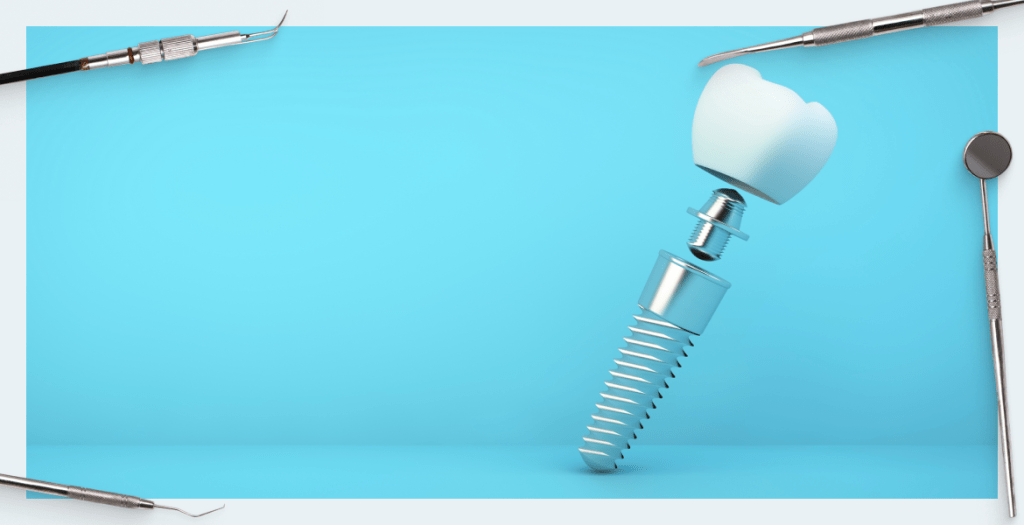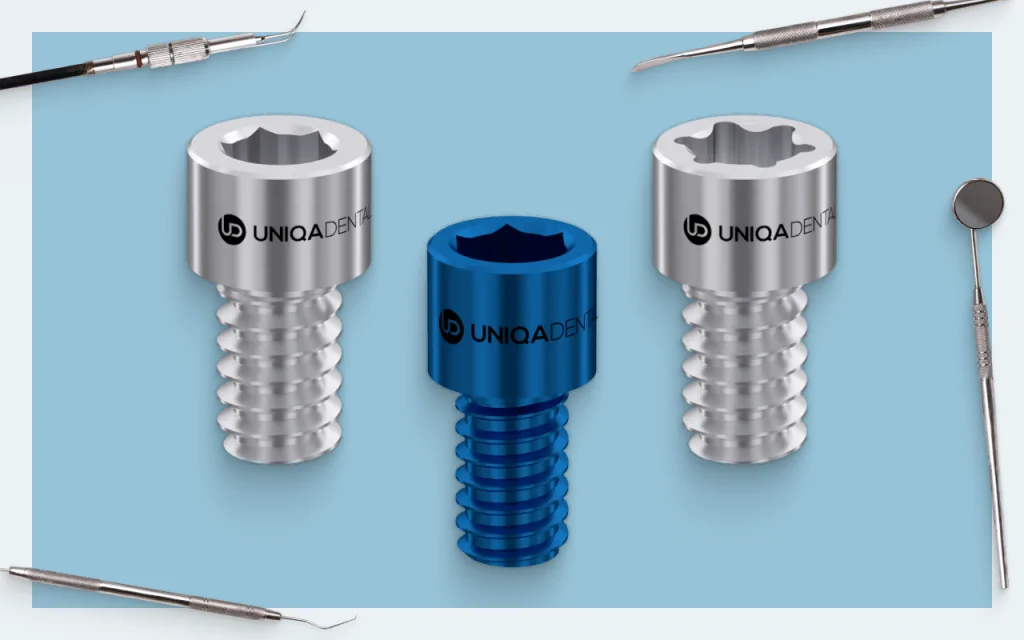Alveolar Ridge Split Techniques: Simultaneous Implant Placement (Part 1)

Contents
Alveolar ridge split allows for implant placement in a narrow ridge with a reduced risk of complications. This technique is promising due to its relative simplicity. Crucially, ridge split preserves the cortical layer on both the buccal and lingual aspects. This helps to maintain bone volume around the implant long-term, a key advantage over other bone grafting methods. Furthermore, the time from surgery to definitive restoration is minimized. This article explores the principles, advantages, and limitations of this technique. We will also discuss recommended implant lengths and shapes for ridge split, illustrating the information with clinical cases relevant to both novice and experienced practitioners.
What is the Ridge Split Technique, and What are the Alternatives?
Bone grafting procedures generally address insufficient alveolar ridge height and width for implant placement. Following tooth loss, the alveolar ridge undergoes gradual resorption as it is no longer stimulated. Without teeth, the bone is not subjected to functional loads, and the body reduces bone volume, reallocating minerals for other purposes. Surgeons often encounter severely resorbed ridges like the one shown below, particularly in the posterior mandible. While sinus lifts address vertical deficiencies in the maxilla, ridge width is rarely an issue there.
Atrophic alveolar ridge unsuitable for implant placement without bone grafting surgery YouTube / Dr. Kamil Khabiev / Dental Guru Academy
Several options exist to address this problem. The following image illustrates some possible solutions:
- Narrow-diameter implants (3.0-3.2 mm): While possible, this isn’t ideal in the molar region due to the potential for fracture. However, if the implant fit is precise, the interface is conical, and passive fit is achieved without issues, this can be viable, especially if the load is distributed across two or more implants.
- Ridge reduction with short implants: This is a slightly improved option. However, significant attached gingiva may be lost. The resulting crown-to-implant ratio may also create an unfavorable lever arm. However, if a 4.0-4.5 mm diameter implant can be placed, the risk of screw or abutment fracture is minimized. Regarding implant length, studies indicate that the superior 5-6 mm of the implant bears the primary load. This approach necessitates bone wall thickness of 1.5-2 mm around the implant, both buccally and lingually. It may not always be possible to achieve this without endangering the inferior alveolar nerve. Gingival plastic surgery will also be necessary to recreate attached gingiva.
- Bone grafting with restoration of ridge height and width, followed by standard-sized implant placement: Let’s examine this option in detail.
Solutions for deficient alveolar ridge width: b – narrow implant ⌀ 3.0-3.2 mm YouTube / Dr. Kamil Khabiev / Dental Guru Academy
Several techniques exist for increasing bone volume:
- Guided Bone Regeneration (GBR): Osteoplastic material, a mixture of autogenous bone chips (harvested from the patient) and allograft or xenograft bone material, is prepared. The material is placed in the deficient area and covered with a membrane. Rigid membranes like titanium mesh or PTFE, or resorbable membranes like collagen, may be used. For small defects, PRF membranes may suffice.
Classic GBR for increasing alveolar ridge width YouTube / Dr. Kamil Khabiev / Dental Guru Academy
- Augmentation with Bone Blocks: The most common techniques are the onlay and Curie techniques. Both are effective, but carry a higher risk of complications.
Augmentation with bone blocks using the Curie method YouTube / Dr. Kamil Khabiev / Dental Guru Academy
- Ridge Split: The primary focus of this article.
Implant placement using the alveolar ridge split technique YouTube / Dr. Kamil Khabiev / Dental Guru Academy
The ridge split technique has similarities to tree grafting. In both cases, living tissue is split, while the cortical layer is preserved and the blood supply to the cancellous bone is minimally disrupted, resulting in accelerated healing. Unlike tree grafting, implants are placed into the cleft, and bone rapidly integrates with the titanium surface.
Grafting a tree with a cutting of a different variety – the cutting has taken root and in a few years will begin to bear fruit YouTube / Dr. Kamil Khabiev / Dental Guru Academy
Grafting a tree with a cutting of a different variety – the cutting has taken root and in a few years will begin to bear fruit YouTube / Dr. Kamil Khabiev / Dental Guru Academy
Key Advantages of the Ridge Split Technique
- Reduced rehabilitation time by a factor of three. Bone block augmentation can take 9-12 months from the initial surgery to restoration. Ridge split typically requires no more than 4 months.
- Attached gingiva volume often recovers after flap elevation. Apically repositioned flap surgery may be needed during the placement of healing caps.
- Temporary crowns can sometimes be placed concurrently with soft tissue plastic surgery, instead of healing caps.
Classic (Outdated) Ridge Split Technique
The following image illustrates the classic approach to ridge split. This early technique involved two stages.
Classic technique for implant placement with a split ridge YouTube / Dr. Kamil Khabiev / Dental Guru Academy
First, a rectangular window was created, effectively weakening the cortical layer. The flap was then sutured and left to heal for approximately 6 weeks. In the second stage, a hole was drilled into the ridge, expanded with ridge expanders, and the implant was placed. The buccal wall was not elevated or displaced.
This technique has significant drawbacks:
- Two surgical procedures instead of one, increasing risk.
- “Blind” implant placement, unlike modern techniques that utilize a longitudinal incision and controlled separation of the alveolar ridge segments.
- Frequent fracture of the buccal wall due to the inferior cut.
fractured buccal wall during an unsuccessful implant attempt with a split ridge YouTube / Dr. Kamil Khabiev / Dental Guru Academy
In such cases, the fractured buccal wall is retained with screws, essentially reverting to a Curie-like technique.
Clinical case No. 1: Retention of a fractured buccal wall with screws, similar to the Curie technique YouTube / Dr. Kamil Khabiev / Dental Guru Academy
Clinical case No. 2: Retention of a fractured buccal wall with screws, similar to the Curie technique YouTube / Dr. Kamil Khabiev / Dental Guru Academy
While bone healing typically occurs, it’s not guaranteed. The detached bone fragment can undergo compromised healing due to impaired blood supply. This poses a serious problem that can worsen the pre-operative situation, even if the frequency is only 1 in 50.
Modern Ridge Split Techniques with Reduced Risk
The contemporary ridge split technique differs significantly. The inferior buccal wall is not incised, preserving its blood supply. Instead, a longitudinal crestal incision is made. If the bone is dense with a thick cortex, additional vertical releasing incisions are made at the cleft edges to mobilize the bone segments. The practical aspects of the current ridge split technique are outlined below.
- Instruments for Implant Site Preparation: While scalpels, piezoelectric surgical devices, and other standard surgical instruments are universally used, ridge expanders are unique to this technique.
Expanders for preparing the implant site during ridge split YouTube / Dr. Kamil Khabiev / Dental Guru Academy
A standard set includes five expanders ranging from 2.4 to 4.8 mm in diameter, which is usually sufficient. Implants larger than 4.5 mm are generally not indicated. Most often, implants with diameters of 3.5-4.2 mm are placed, and the final expander diameter is usually smaller than the implant diameter.
An example of expanders being used to widen the gap between bone walls YouTube / Dr. Kamil Khabiev / Dental Guru Academy
Expanders are wedge-shaped with flattened threads. These threads allow the expander to advance into the bone, compressing and compacting the bone rather than cutting it. This is highly desirable for implant site preparation.
Bone is a living tissue with limited flexibility and elasticity. As expanders are inserted into the cleft, the bone walls gradually separate. Start with the smallest diameter expander, gradually increasing the diameter with pauses to allow the bone to adapt. Avoid rushing or using abrupt movements. This process is similar to stretching exercises for flexibility.
- Ideal Implant Shape for Ridge Split: Conical implants are preferred (see the rightmost example in the image below). The conical shape mimics the expanders, acting as a wedge to further split the ridge.
Various implant shapes and thread profiles. Conical shapes with aggressive threads are best for ridge split YouTube / Dr. Kamil Khabiev / Dental Guru Academy
Please note that the body of the implant on the far right has a pronounced conical shape and less conical threads. Sharp, narrow threads cut into the bone, while the conical body compresses and gradually increases pressure on the bone. This promotes good primary stability even in challenging conditions. Implants with similar shapes and thread profiles are offered by several manufacturers, including Uniqa Dental.
Illustration how a conical implant further splits the ridge YouTube / Dr. Kamil Khabiev / Dental Guru Academy
The optimal implant for ridge split:
- conical shape with aggressive thread profile
- diameter: 3.5-4 mm
- length: 7-10 mm
- Requirements for Alveolar Ridge Size and Shape: The angle between the buccal and lingual walls should be at least 30°. In some cases, a more acute angle is possible, but only if the alveolar ridge is sufficiently high and there is adequate bone width in the lower part.
The optimal alveolar ridge shape for ridge split, approximately 45° YouTube / Dr. Kamil Khabiev / Dental Guru Academy
The picture above is an ideal candidate for the ridge split technique. A 45° angle provides a wide base (> 9 mm), supporting the buccal wall and providing sufficient bone for implant retention. The 30° angle is not absolute. The following table, based on practical experience, provides guidance.
TThe colored cells indicate ridge width at different vertical distances from the crest of the ridge, for differing buccal/lingual wall angulations. The rightmost column shows the ridge width at the crest. For example, with an initial crest width of 1 mm and a 30° angle, the ridge width at a depth of 8 mm is only 5.32 mm. For a 3.5-4.0 mm implant, the difference is small. For a 3.5mm implant, the bone thickness on each side is: 5.32-3.5=1.82mm at 8mm depth, and 6.4-3.5=2.9mm at 10mm depth. These cells are yellow to indicate that placement is permissible only with extensive experience and skill, and if:
- The patient does not have bruxism
- Bone density is high with a high-quality cortical layer (D1-D2)
If these conditions are met, careful placement can be considered. Red cells indicate ridge split is not appropriate. Green cells indicate ridge split can be performed.
The remaining tables indicate working zones for alveolar ridges of different widths and different angles. Such tables help you decide whether to undergo surgery or follow the classic path of increasing bone tissue volume using the GBR method or augmentation with bone blocks.
The 30° rule is a general guideline. If the initial alveolar ridge width is 4 mm, a 10 mm long implant can be placed even at a 20° angle. Narrow ridges can be modified via osteotomy to increase width from 1mm to 3mm. The key factor is adequate angle divergence of the walls. Flat ridges (e.g., 4 mm at the crest and 4-5 mm above the inferior alveolar nerve) require traditional bone grafting.
The crestal width is the same, but the bone volume is fundamentally different due to wall angulation: on the left the angle is too sharp and there is not enough bone volume to place an implant; on the right there is a good angle and sufficient volume to place an implant YouTube / Dr. Kamil Khabiev / Dental Guru Academy
Let’s revisit the clinical example, previously shown with measurements and calculations. The implants were successfully placed.
Successfully placed implants using the ridge split technique YouTube / Dr. Kamil Khabiev / Dental Guru Academy
Note that the lingual cortical wall remained intact, while the buccal wall was bent outwards to accommodate the implant. This indicates a properly performed procedure. The greater the angle of divergence, the more pronounced the buccal wall bending. Sometimes, the buccal cortical wall exhibits reverse bending with its upper edge overhanging the rest of the segment. If left untreated, this can result in resorption of the superior edge of the buccal bone.
In this case, osteoplastic material was added to the buccal wall.
Alveolar ridge contour before and after implant placement using the split method: The yellow dotted line shows the new alveolar ridge contour, accounting for the implant placement and increased buccal wall thickness due to the osteoplastic material YouTube / Dr. Kamil Khabiev / Dental Guru Academy
- Guidelines for Preparing Bone for Ridge Split: Incisions at the inferior buccal wall base have been abandoned to preserve blood supply. A crestal incision (approximately 10 mm deep) is made in all bone types. Depending on bone density, vertical releasing incisions may be required.
Rules for cutting the alveolar ridge for subsequent split YouTube / Dr. Kamil Khabiev / Dental Guru Academy
Ridge split is frequently used to restore 4-6 teeth in the mandible. Cutting guidelines vary based on bone density:
- D1 (Dense Bone): Thick cortical layer (2-3 mm). Three incisions are made: one horizontal along the alveolar ridge (10 mm deep) and two slightly angled vertical releasing incisions. These lateral incisions are limited to the depth of the cortical bone. In cases with adjacent teeth (e.g. missing teeth #5 and #6 with #4 and #7 present), vertical incisions should be made adjacent to the remaining teeth, creating a trapezoid without a base. This facilitates outward bending of the buccal wall.
- D2 (Medium Density Bone): Cortical layer thickness of 1.2-2 mm. One horizontal and only one vertical releasing incision are sufficient. Two vertical incisions can lead to excessive buccal wall displacement and compromised primary stability.
- D3 (Low Density Bone): Cortical layer approximately 1 mm. The cancellous component is loose. Releasing incisions are typically not required. The buccal wall is easily displaced.
Exceptions exist. In cases of bounded edentulous spaces, a crack can extend to the adjacent tooth periodontium. Shallow (1 mm) releasing incisions should be considered even in D3 bone to prevent this. Ridge split is not indicated in D4 bone.
Successful ridge split in bounded edentulous spaces YouTube / Dr. Kamil Khabiev / Dental Guru Academy
Here we make vertical cuts in the area of the remaining teeth. The illustration below shows a diagram and a completed section in the area of the preserved tooth. In the example given, two vertical incisions were made despite the fact that the patient had a D2 bone type.
Diagram and clinical view of a vertical releasing incision near an adjacent tooth YouTube / Dr. Kamil Khabiev / Dental Guru Academy
Technique for Ridge Split and Implant Site Preparation
We proceed to the stage of work when the longitudinal and weakening incisions are ready and we begin to prepare a site for the placement of one, and more often than not, two implants.
A spear-shaped bur is preferred for the initial pass. In D2 bone, a 1.5 mm diameter bur can be sufficient.
Spear-shaped bur for the initial pass during implant site preparation YouTube / Dr. Kamil Khabiev / Dental Guru Academy
The main advantage of a spear-shaped drill is its smooth cutting edge; such a drill crushes and pushes apart bone tissue more than it cuts. This is important because, let’s say, a Lindemann drill with aggressive teeth bites into the bone and weakens the already quite thin vestibular wall.
After the initial hole is ready, begin using the expanders, starting with 2.4 mm diameter.
There are several ways to work with expanders; the diagram below shows a sequential method. First we screw in the expander ⌀2.4 into the first hole, unscrew and screw into the second.
Expanding the hole with expanders – the first pass with an expander with a diameter of 2.4 mm YouTube / Dr. Kamil Khabiev / Dental Guru Academy
Then we take the expander of the next size (2.8mm) and screw it into the first hole. The 2.4 mm expander remains in the adjacent hole. After an expander with a diameter of 2.8 mm is screwed in, remove the first one and screw the expander of the next size (3.3 mm) into this hole. And so on until the desired diameter, after which we place the implants. The logic of the sequential use of expanders is that at any given time at least one expander works like a wedge and prevents the bone walls from coming back together.
Another method of using resistance bands is parallel. This is when there is a 2.4 mm expander in the first hole, in the second you unscrew the next one with a diameter of 2.8 mm, and so on until the diameter when the implant is next, as shown in the illustration below.
The sequence of preparing an implant site using expanders YouTube / Dr. Kamil Khabiev / Dental Guru Academy
The final stage is implant placement after the last expander using the ridge split method YouTube / Dr. Kamil Khabiev / Dental Guru Academy
Clinical Example: Note the narrow ridge with an angle of about 30°. This is a borderline case according to the table.
Beginning of the surgery to place implants using the ridge split method YouTube / Dr. Kamil Khabiev / Dental Guru Academy
Ridge split using expanders (left) and implant placement (right) YouTube / Dr. Kamil Khabiev / Dental Guru Academy
Successfully placed implants (left) and the cavity closed with osteoplastic material resulting from the operation YouTube / Dr. Kamil Khabiev / Dental Guru Academy
As we see, even in a difficult situation, the placement of implants can be quite successful. A few words should be said about the use of osteoplastic material. It is advisable to fill the gap between the bone plates with 100% autogenous chips. The only thing that is not recommended is synthetic bone. As a last resort, it is better to fill the PRF cavity with clot, but not to add non-resorbable material that will never fully integrate with living bone.
But the bone chips collected during the surgery may not be enough, especially if there is a need to increase the volume on the outside of the cortical wall. Then a classic 50/50 mixture of autogenous and xenogeneic bone material is prepared. Before insertion, the bone material must be mixed with the patient’s blood, or even better, a crushed PRF clot must be added to the mixture. A PRF membrane is used to close the surgical field before suturing the soft tissues. We have a separate article about plasma therapy in dentistry, it describes in detail how to prepare PRF clots, make plugs and membranes from them, and how the PRF membrane accelerates healing.
In our case, the operation was successful and after three months the patient received fully functional prostheses.
The final result: implants on the lower jaw occupy optimal positions; the surgery is successful YouTube / Dr. Kamil Khabiev / Dental Guru Academy
Three months later, the patient was fitted with wave prostheses that were functional and aesthetically attractive YouTube / Dr. Kamil Khabiev / Dental Guru Academy
As we can see, the period from the moment of surgery to 100% restoration of chewing function is minimal.
That’s all for now. In the next part, we will examine more clinical examples, demonstrating that the initial ridge width is not the primary factor. We will also discuss how to practice ridge split without patients to develop skills with this procedure.
Stay tuned for the next publications.







